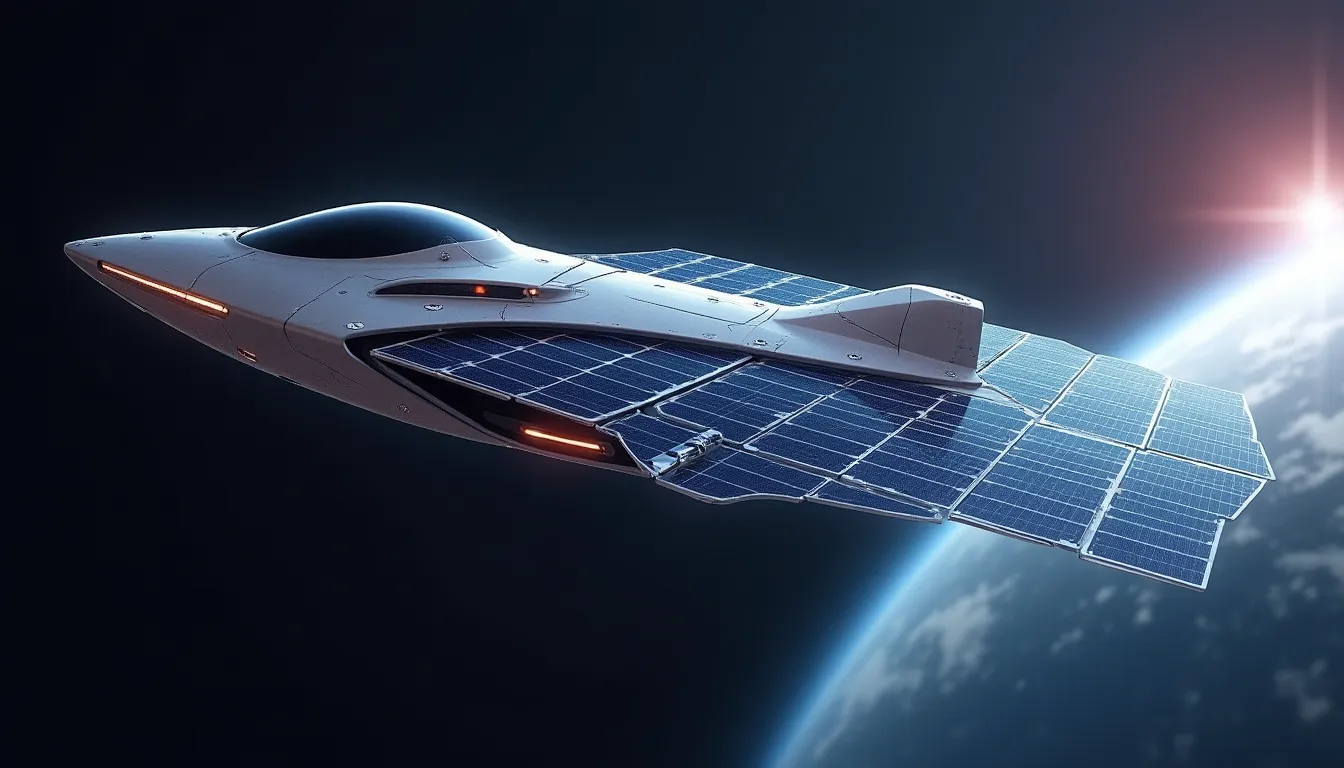As the world increasingly turns to sustainable energy solutions, space solar power (SSP) stands out as a promising frontier. Harnessing solar energy in orbit could provide a continuous power supply, unaffected by terrestrial limitations. However, recent activity in solar weather poses significant challenges for the operational viability of SSP systems. This article delves into the recent developments in solar weather, technological advancements, and the broader context of SSP initiatives within the aerospace and defense sectors.
Understanding Solar Activity and Its Impact on SSP
Recent data indicates heightened solar activity, including multiple solar storms and an increased risk of X-class flares reported in late October and early November 2025. These solar phenomena can disrupt the geomagnetic environment of Earth and have profound implications for satellite operations—critical for the reliability of SSP systems.
Solar storms generate intense electromagnetic activity that can interfere with radio communications and GPS signals, which are essential for the operation and control of space-based solar power satellites. As noted by experts, “The ability to predict and mitigate the impacts of solar weather is crucial to ensure the integrity of SSP infrastructure and its power transmission capabilities.” This underscores the need for robust advanced navigation systems equipped with high-performance MEMS accelerometers to maintain precise tracking and positioning of satellites during solar events.
The Role of Solar Observation Missions
Ongoing solar observation missions like the Solar and Terrestrial Relations Observatory (STEREO) and the Solar and Heliospheric Observatory (SOHO) play a pivotal role in advancing our understanding of solar phenomena. These missions provide critical data on solar flares and coronal mass ejections, which are essential for designing resilient SSP systems.
By analyzing solar weather patterns, engineers can develop strategies to protect SSP satellites from potential disruptions. The integration of high-precision fiber optic sensing coils in satellite systems might enhance their ability to withstand solar disturbances, ensuring stable energy collection and transmission in orbit.
Current Developments in SSP Technology
Despite the lack of recent news about specific SSP project launches or defense sector initiatives, the groundwork for future developments continues to be laid. The ongoing efforts in improving solar energy harvesting technologies and understanding the space environment contribute significantly to the evolution of SSP.
For instance, advancements in thermal battery systems and energy storage technologies are crucial for storing solar energy collected in space. As researchers explore more efficient methods of solar energy conversion, the potential for SSP systems to become a viable power source for Earth grows.
Moreover, emerging products like the ZQXXSGDSS system, featuring high-performance single-tube PIN quadrant detectors, are paving the way for improved laser beam positioning and tracking applications. Such technologies are essential for ensuring the accuracy of solar energy collection systems in space.
The Policy Landscape and Future Initiatives
While no new SSP-specific policies have emerged recently, the overarching framework for space exploration and infrastructure remains a priority for agencies like NASA. Recent policy updates reflect a commitment to advancing solar system exploration, indirectly supporting the development of SSP technologies.
As space agencies continue to prioritize solar observation missions, the insights gained will be invaluable for future SSP initiatives. In the coming years, we may see increased collaboration between government and private sectors to address the technical and regulatory challenges associated with deploying SSP systems.
Conclusion
The future of space solar power is filled with both opportunities and challenges. As solar weather continues to influence satellite operations, the need for resilient technologies becomes increasingly apparent. The ongoing advancements in solar observation and navigation systems, coupled with a supportive policy environment, position SSP as a key player in the quest for sustainable energy solutions. As we look ahead, the lessons learned from solar phenomena will undoubtedly shape the next generation of space-based power systems, potentially revolutionizing how we harness energy from our sun.
References
-
Solar flares - Sunday, 2 November 2025 | SpaceWeatherLive.com (www.spaceweatherlive.com) - 11/2/2025 Current data suggests there is a slight possibility for aurora to appear at the following high latitude regions in the near future.
-
Interstellar invader Comet 3I/ATLAS is still full of surprises - Space (www.space.com) - 11/1/2025 Comet 3I/ATLAS brightened by an unexpected amount as it made its closest approach to the sun — and scientists don’t know why.
-
Space News: Solar storms have influenced our history (lakeconews.com) - 11/1/2025 01 November 2025. Coronal mass ejections from the Sun can cause geomagnetic storms that may damage technology on Earth. NASA/GSFC/SDO. In May …
-
Earth Gets a 1,2,3-Punch and the X-Flare Factor is Back | Solar … (www.youtube.com) - 10/15/2025 … Radiation Storm & More | Space Weather News 23 October 2025. Dr.Tamitha Skov•33K views · 16:49 · Go to channel · Earth Gets Primed to Storm and …
-
What’s Happening in Space Policy October 5-11, 2025 (spacepolicyonline.com) - 10/5/2025 Here is SpacePolicyOnline.com’s list of space policy events for the week of October 5-11, 2025 and any insight we can offer about them.
-
What’s Up: October 2025 Skywatching Tips from NASA (science.nasa.gov) - 9/30/2025 Here are the phases of the Moon for October. You can stay up to date on all of NASA’s missions exploring the solar system and beyond at science.



